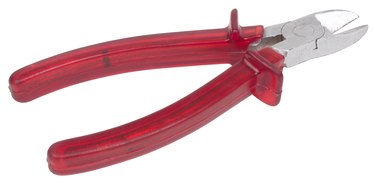Things You'll Need
Wire stripper
Screwdriver
Thermostat wiring

Thermostats have the ability to be wired to the furnace blower. This allows the homeowner to run the blower without the heat or air conditioning on. This is like having an air circulation system in the home. The air is taken back to the blower through the return air ducts to the furnace and is then returned to the home through the supply air ducts. Doing this can help evenly distribute the air throughout the home which leads to more comfortable temperatures. It is easy to wire a thermostat to your furnace blower with a few tools and a little time.
Instructions
Step 1
Turn off the power to your furnace by turning the switch on the side of the furnace to the "off" position.
Video of the Day
Step 2
Remove the access panel on the front of the furnace and locate the control board. You will find a terminal strip where the low voltage control wiring hooks up to.
Step 3
Locate the "G" terminal, which controls the blower operation from the thermostat, on the board. Connect the green low voltage wire to the "G" terminal and put the access panel back on the front of the furnace. If no green wire exists you may need to pull a new thermostat wire from the furnace to the thermostat.
Step 4
Remove the thermostat from the wall. It should come off by gently pulling on it.
Step 5
Connect the green wire to the "G" terminal on the thermostat. Snap the thermostat back into place on the wall.
Step 6
Turn the power to the furnace back on. Turn the thermostat "fan" setting to the "on" position. The blower should kick on and you should feel air out of your supply air registers.
Warning
Make sure the power is off to your furnace before working on the control wiring. Failure to do so could result in the control board shorting out.
Video of the Day